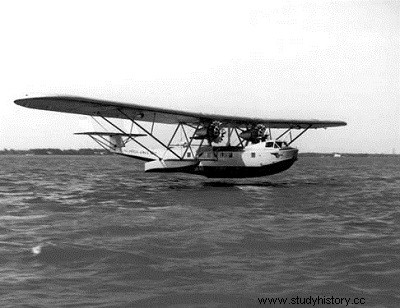
At Le Bourget, on the 2nd in the afternoon, we wait the arrival of competitors. Albert Sarraut, Minister of State, converses with Laurent Eynac. We recognize Maryse Bastié, who crossed the South Atlantic the previous year, and the somewhat lanky silhouette of a bird lost on earth of Antoine de Saint-Exupéry, who came to welcome his friend Guillaumet.
At 4 p.m., heads are raised:the control tower signals an aircraft. He is not French, but Italian. It was Cupini and Paradisi who covered the 6,190 km course in seventeen hours and thirty-two minutes.
In the massive face of Albert Sarraut, the lips oscillate between the official smile and the pout of spite. Hardly had he had time to congratulate the winners when a second trimotor appeared. It is still an Italian, red, with the emblem of three green mice. Five minutes later, a third Italian landed with Bruno Mussolini, one of the Duce's sons.
It smells of rout, the aeronautical Waterloo. The faces of the French lengthen. And ours? At 7:40 p.m., the roar of engines was heard. Alas!... It is the English Clouston. Codos, Rossi, Guillaumet are far behind and will not arrive until much later. They had, however, pulled the maximum out of the too slow aircraft.
The next day, the Italians, relaxed and smiling, visited the International Exhibition. At Le Bourget, the curious admire the Savoia-79.
The Spanish Republicans already know them:they are the bombers that attack their troops and their cities.
The French are brooding over their disappointment. The right-wing press quips:“Is Pierre Cot [the Air Minister] an agent of fascist propaganda? Obviously, it would have been better to postpone this race or to suppress it. You shouldn't over-dramatize. Our air force is going through a crisis, but it is achieving many successes. Especially on the South Atlantic.
